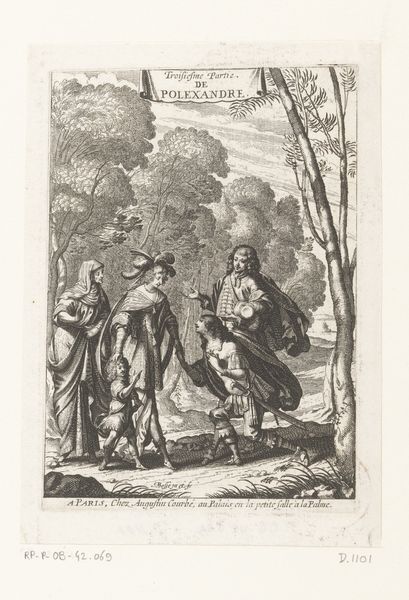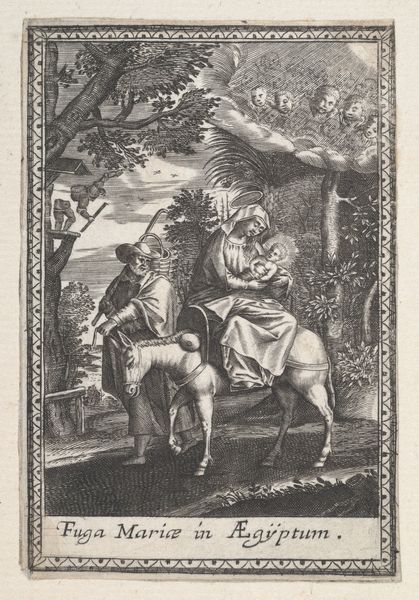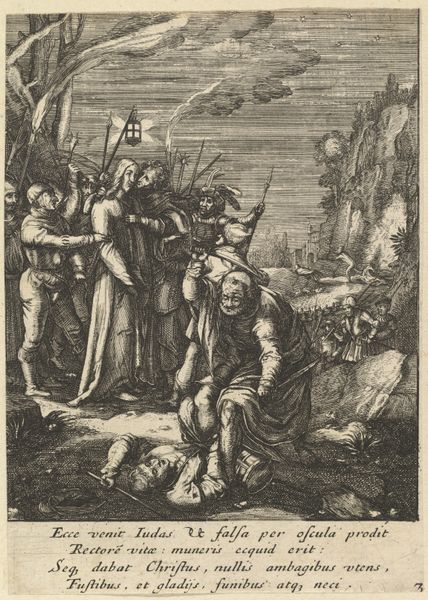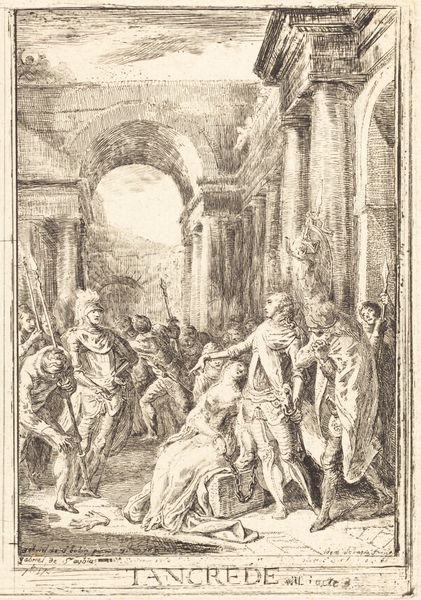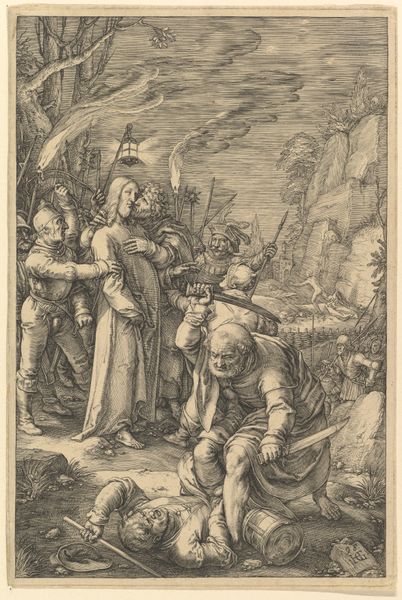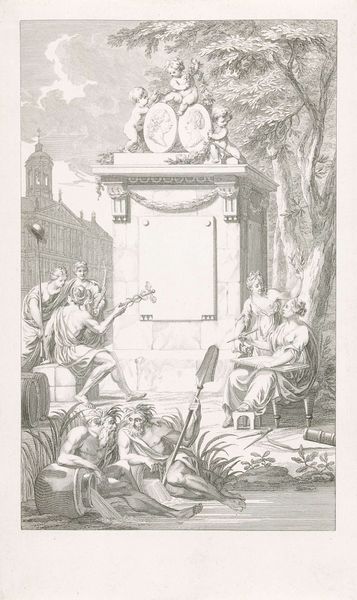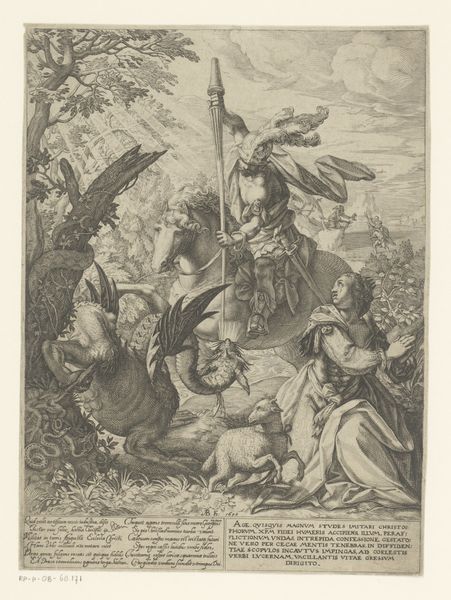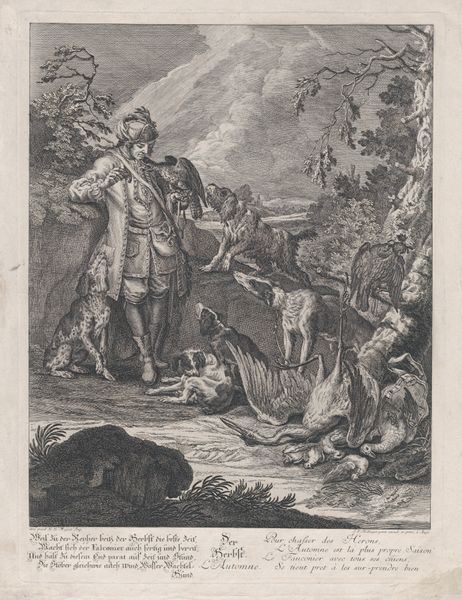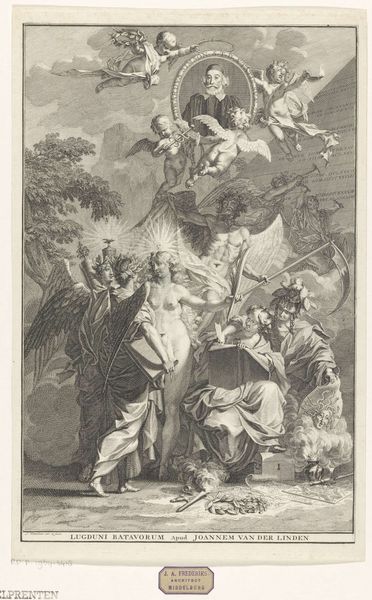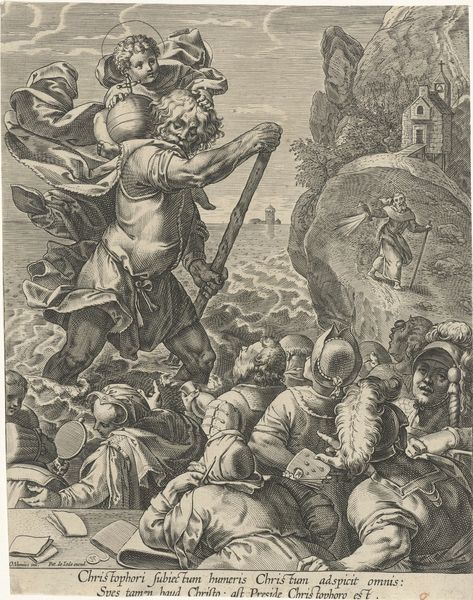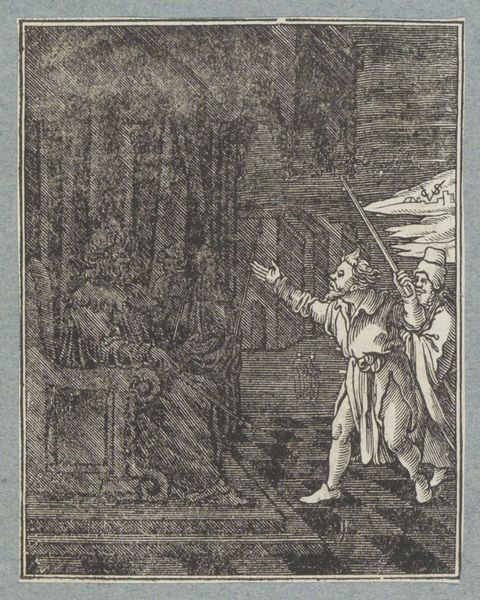
The Chapel of the Enfants-Trouvés in Paris: La Suite des rois mages: gardes et trompettes 1754
0:00
0:00
drawing, print, engraving
#
drawing
#
baroque
# print
#
figuration
#
soldier
#
horse
#
men
#
line
#
history-painting
#
engraving
Dimensions: Sheet (Trimmed): 20 11/16 × 11 3/16 in. (52.5 × 28.4 cm)
Copyright: Public Domain
Curator: This detailed engraving by Étienne Fessard, dating back to 1754, depicts "The Chapel of the Enfants-Trouvés in Paris: La Suite des rois mages: gardes et trompettes." The original drawing is credited to Charles-Nicolas Cochin. Editor: My immediate reaction is one of formality, and frankly, a little pompous. It's like peering through a grand archway into a highly staged, almost theatrical procession. The pyramid in the background is bizarre, though. Curator: Well, the chapel itself, dedicated to foundlings, has a complicated and poignant history within Paris, linked with social inequalities. Here we see what's literally "guards and trumpets" and what we can infer is an allusion to the Three Kings, symbols of the powerful Catholic undercurrent of Parisian society at that time. Cochin and Fessard offer us an idealized glimpse. Editor: Indeed. The idealized component of how art plays a role in both reflecting, and masking societal functions becomes all too clear with details such as this print. Are we to consider it in support of, or in subversive conversation with these functions? Note how they're deliberately positioned outside the foundling home… distant. Curator: Right. The composition definitely reinforces a power dynamic. The imposing architecture, the mounted soldiers, their polished gear, even the towering pyramid on the horizon... It all speaks to the opulence and authority contrasted by their service. There's a tension. The arch, presented at an angle, forces your eyes on those on horseback who appear on a mission. Who they are, who they represent, or their motivations—all are obscured by what you mention about its theatrical nature. Editor: What resonates most, though, are the stark contrasts presented in the line work; sharp dark lines beside softer, flowing lines; figures boldly highlighted against darker shadowed pockets. The etching emphasizes precision and a certain level of grand narrative, further enhancing that element of control, that power you noted, both real and implied. Curator: The print is an intriguing lens to examine both societal structure and the politics embedded within artistic patronage of the Baroque. We see the history, carefully, deliberately arranged. Editor: A powerful visualization for our consideration, indeed. Thanks to the level of contrast chosen by the artists, it prompts inquiry.
Comments
No comments
Be the first to comment and join the conversation on the ultimate creative platform.

